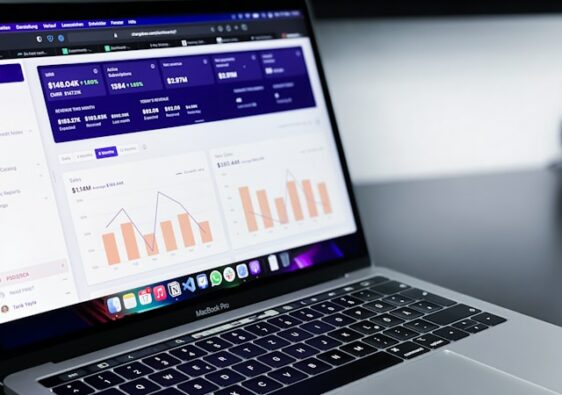Companies seek to reach a wide audience in the marketplace to attract more customers. However, in today’s trade, using a whole-market strategy is not effective in the long run. People receive many advertisements every day, and if the message is not targeted to a specific group of consumers, it may not get their attention. In order to get a brand’s message to the right people who might become its customers, you need to identify the target audience. In this article, let’s look at how to do this in 8 simple steps.
How to define your target audience
With a clearly defined consumer segment, it’s much easier to determine ways and channels to promote products. Here’s a look at how to define your target audience in eight simple steps.
Conduct market research
Market research, industry trends provides information about the buying habits, intentions of the target audience. Companies use different ways to interact with focus groups: conduct surveys, track feedback, Q&A discussions to get feedback from customers, understand their needs, preferences and improve service.
Create an image of the ideal customer
People who need certain products, services, have certain common characteristics. To identify these qualities, based on market research, a portrait of the ideal customer, or customer that the company will focus on when promoting products.
The ideal customer is a fictional character that describes a company’s customer who is interested in its products. The brand makes an effort to attract his or her attention, make him or her a customer, and retain him or her. The company can make several images of the ideal customer for each segment of the target market.
The image of the ideal customer is made on the basis of socio-demographic, personal indicators of a particular consumer group. The more accurately the portrait of the ideal customer is compiled, the more effective the advertising campaigns will be. Marketers develop from three to five images of ideal customers and over time (every six months or once a year) review, improve them, as the marketplace changes, evolves.
Analyze your offerings
Thousands of advertisements are placed daily on offline and online venues. With so much competition, it is important to create unique selling propositions (USPs) with competitive advantages in your niche, relevant to the needs of consumers. You need to think about what the main features, benefits of the product attract customers, what to avoid and what should be the focus of your advertising campaigns to stand out from the competition and satisfy customers. The main goal is to create valuable, useful personalized (individualized) messages that grab the consumer’s attention and solve their problem.
Evaluate the competition
One effective way to learn the characteristics of your target audience, especially for a start-up business, is to observe your competitors. At this stage, consider who your competitors’ advertising campaigns are aimed at, who their current customers are, and what analytical tools and promotion channels your competitors use, such as Facebook, Instagram, Twitter, LinkedIn, TikTok, and Snapchat.
Such a study will determine the most appropriate platforms for content marketing, identify pain points (problems) of consumers, and target the content to the same consumer segment, knowing that customers are already interested in this niche. It’s also worth assessing whether your competitors’ target audience matches your own business. You should also find effective ways to fill in the gaps missed by competitors in their marketing strategies. This allows you to stand out in the market and increase your sales potential.
Study data about existing customers
The easiest way to learn more information about your target audience is to study the general traits of your existing customers. A database of loyal customers can give an idea of the kind of people a brand should target. To collect and analyze data, companies use various ways to interact with customers: conducting surveys, social media contests, personal meetings, corporate events, phone calls, collecting feedback in exchange for gifts, discounts, observing discussions in groups, comments on blogs, forums, and social networks.
Use analytics tools
The analytics services of Google Analytics. Metrics provide insight into the social and demographic data of website visitors, generating statistical reports on market segments divided by age, gender, location, and user interests. Such analytics allows you to get to know your audience better and create more relevant content for them, contributing to increased sales and profits. Facebook Insights, designed for Facebook users, works similarly to Google Analytics.
CRM software analytics provides information to identify and segment your target audience. Customer Relationship Management (CRM) tracks and stores customer data: name, age, contact information, behavior (items viewed, previously purchased), mobile or desktop devices from which customers logged in.
Use social media analytics
Social networks provide audience analytics that provide access to demographic data, activity, and user interactions with brand channels.
Each social network has different characteristics and audiences, so it’s important to monitor analytics across all platforms to understand which promotion channels to invest in for maximum customer engagement. Twitter, Instagram tends to have a younger audience, Facebook an older one. At the same time, Twitter, Instagram, and TikTok offer short-form content, while Facebook, YouTube can publish long-form content and videos. With analytics, you can set up targeting, or targeted ads, to specific, desired audiences to increase conversions and sales on Facebook and Instagram.
Identify sales channels
Knowing your target audience allows you to identify the communication channels most commonly used by potential customers and use those channels to get your message out to them.
Business benefits
Identifying your target audience offers many benefits when starting and growing a business. Some of them are:
- Targeting a specific market. Targeting the right audience doesn’t mean excluding consumers who don’t meet specific criteria. It allows you to focus the message on the right market and people who are likely to be interested in the product and buy it, leading to sales or conversions.
- Saving resources, increasing return on investment. Targeting a wide audience requires a lot of time, resources. Segmentation of the target market allows you to focus marketing efforts only on those people who are most likely to convert, which saves the firm’s advertising budget and increases the return (ROI) on marketing investments.
- Customer retention, increasing brand loyalty. 80% of consumers prefer personalized advertising messages that match their preferences. Defining a specific target audience allows you to deliver relevant information only to consumers interested in it. With a clear understanding of the needs of potential customers, it is possible to provide them with valuable, useful solutions, and as a result build a strong long-term relationship with them, increasing their loyalty to the brand.
- Increase the effectiveness of marketing campaigns. Information about the target audience is used to find sales channels, types of content, setting up targeted advertising aimed at these consumer segments.
Conclusion
Identifying the target audience is the first and important step to success for any company, especially in the early stages of business creation. The more accurately a company defines its target audience, the more effective the results of its marketing efforts will be. Knowing the characteristics of a particular demographic group of consumers will help attract their attention to the advertising campaign, interest in the product and induce them to make a purchase. Market research, analysis of data regarding the activity, behavior and intentions of potential buyers will help.



